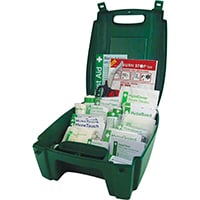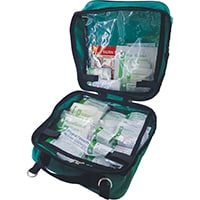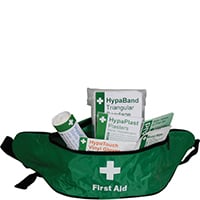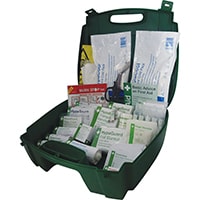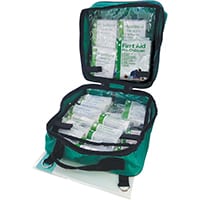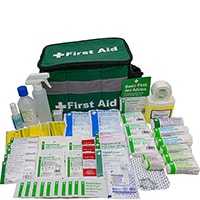
The prospect of leaving a child in the care of another requires a lot of trust from parents, and most will expect that schools are properly stocked with first aid supplies and that carers have received the appropriate training. Standards set by the Early Years Foundation Stage statutory framework (EYFS) and the Office for Standards in Education, Children’s Services and Skills (Ofsted) help secure parents, pupils and students in the knowledge that all staff have the training and supplies they should to guarantee the best first aid treatment possible in the case of an accident.
Take a look at our 5 first aid and safety considerations for the new academic year to make sure you’ve got everything in place to stay compliant for the back-to-school season.
The Importance of First Aid Kits in Schools
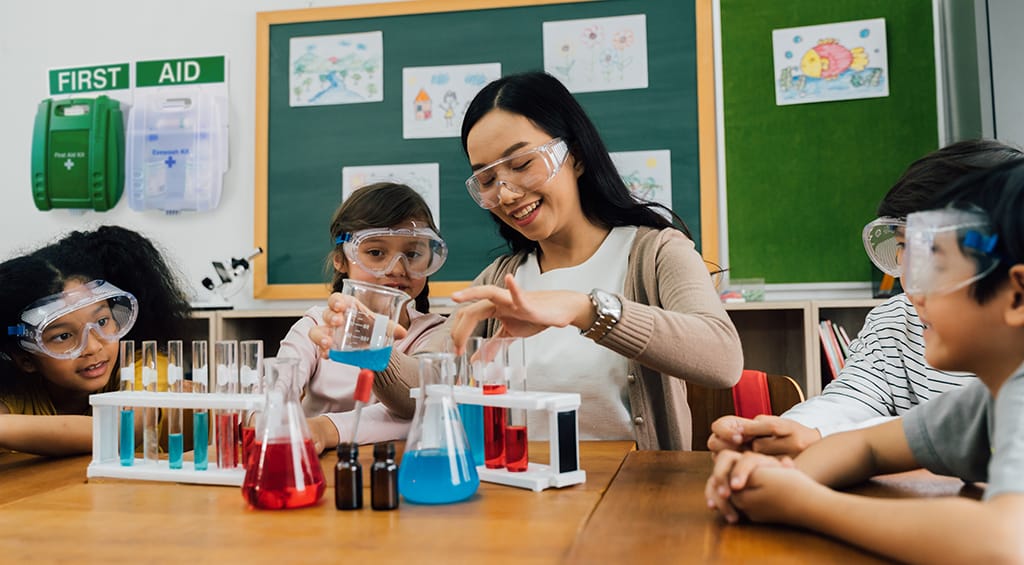
Early Years
The safety of a child is one of the primary factors parents consider when deciding which nursery or school is right for them. Meeting the standards outlined by the EYFS and Ofsted is the bare minimum you can do to guarantee the safety of your students. Trained paediatric first aiders need to have the appropriate first aid equipment readily accessible to properly respond to emergencies.Providing adequate first aid kits and ensuring that your carers are properly trained is important not only to meet legal standards, but also to create a safe environment for children to learn in. Schemes like Millie’s Mark make it clear to parents which early years education providers put the safety of their children first by meeting or exceeding the standards set for them.
Schools and Colleges
While government regulations don’t require employers to provide first aid for anyone other than their employees, it is still strongly recommended that all schools and colleges consider the first aid needs of their pupils, students and visitors when making provisions.Government guidelines state that adequate and appropriate equipment, facilities and personnel must be made available whenever people are on school or college premises, as determined by a first aid needs assessment. First aid provisions must also be made available when staff, pupils and students are participating in activities off-site, like educational visits.
How many first aiders should a school, college or early years education provider have?
Early Years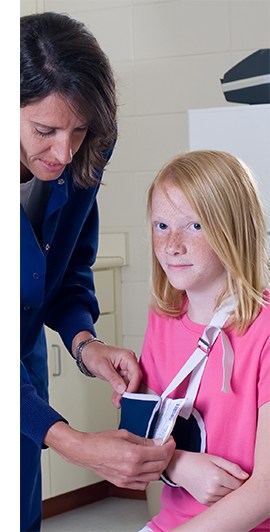
While the number of first aiders your school requires will depend on its specific circumstances, the EYFS statutory framework does set minimum standards for paediatric first aid in all childcare settings. Those standards are as follows:
- At least one person with a full up-to-date Paediatric First Aid (PFA) certificate must be present and available on the premises when there are children present and must also accompany children on outings.
- Childminders and anyone else who might be left alone in charge of children for any period must hold a full up-to-date Paediatric First Aid (PFA) certificate.
- Training must be renewed once every three years and be relevant for workers caring for young children and, if applicable, babies. Training should also take into consideration the number of children, staff, and layout of the premises to ensure that the first aider can effectively respond in the case of an emergency.
- People who have completed a Level 2 and/or Level 3 qualification must also have received either a full Paediatric First Aid or an Emergency Paediatric First Aid certificate within three months of starting work to be considered part of the required staff-to-child ratio.
- Childcare providers should ensure parents are aware of which persons hold an up-to-date Paediatric First Aid certificate by either displaying that information or by making it available upon request.
A paediatric first aid training course prepares first aiders to care for children in accordance with regulations.
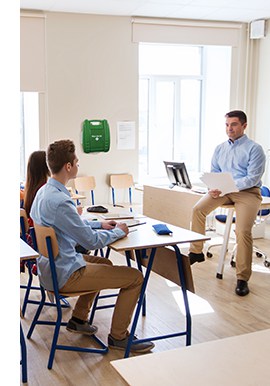 The number of first aid kits your school, college or early years education provider requires also depends on its specific circumstances. An appropriate number of first aid kits will be informed by your risk assessment and first aid needs assessment. Here are a few considerations to keep in mind:
The number of first aid kits your school, college or early years education provider requires also depends on its specific circumstances. An appropriate number of first aid kits will be informed by your risk assessment and first aid needs assessment. Here are a few considerations to keep in mind:
Schools and Colleges
The appropriate number of first aiders for your school or college is ultimately determined by your first aid needs assessment. The minimum provision, however, is as follows:
-
At least one appointed person or designated first aider to take charge of first aid arrangements.
-
Freely available information for employees detailing the location of equipment, facilities and personnel
How many first aid kits are required in a school, college or early years education provider?
 The number of first aid kits your school, college or early years education provider requires also depends on its specific circumstances. An appropriate number of first aid kits will be informed by your risk assessment and first aid needs assessment. Here are a few considerations to keep in mind:
The number of first aid kits your school, college or early years education provider requires also depends on its specific circumstances. An appropriate number of first aid kits will be informed by your risk assessment and first aid needs assessment. Here are a few considerations to keep in mind:
- How many separate areas does your school encompass, and how many floors need to have access to a first aid kit? Ensure that there is a first aid kit within quick and easy reach of all areas.
- Are there any sites separate from the main building that need to be served? These can include playgrounds or sports fields, for example.
- Are there any areas that pose a higher risk of injury, for example, workshops or science labs? These areas may need additional first aid kits or specialised first aid kits.
- Does your school partake in field trips or other activities off-site? If so, portable first aid kits or sports first aid kits may be required.
- Does your school have any vehicles? All school vehicles should be equipped with a suitable first aid kit.
What Should a First Aid Kit Include in an Early Years Education Provider?
The EYFS and Ofsted requires all care providers on the Early Years Register to ensure that a first aid kit is accessible at all times and is stocked with “appropriate contents” at all times. What exactly constitutes appropriate content?
There is no one-size-fits-all answer to that question; your nursery’s risk assessment and first aid needs assessment will determine how you should appropriately stock your first aid kits. However, the HSE recommends the following contents for a minimum first aid kit in a low-risk environment:
Plasters
Plasters are one of the most important items found in a first aid kit. They are versatile and often come in handy when dealing with many injuries commonly sustained by children.
Sterile Eye Pads
Sterile eye pads help to protect the eye in the case of a minor eye injury that may be sustained while a child is playing, for example.
Triangular Bandages
Triangular bandages are a versatile tool, useful for creating slings or for securing wound dressings in place.
Plasters are one of the most important items found in a first aid kit. They are versatile and often come in handy when dealing with many injuries commonly sustained by children.
Sterile Eye Pads
Sterile eye pads help to protect the eye in the case of a minor eye injury that may be sustained while a child is playing, for example.
Triangular Bandages
Triangular bandages are a versatile tool, useful for creating slings or for securing wound dressings in place.
Safety Pins
Safety pins are typically used to secure bandages and dressings in place.
Wound Dressings
Wound dressings are an important part of every first aid kit and are used to protect a wound and facilitate its healing.
Disposable Gloves
Disposable gloves allow first aid to be administered in a sterile manner by lowering the risk of dirt and germs being introduced to a wound from the hands.
Safety pins are typically used to secure bandages and dressings in place.
Wound Dressings
Wound dressings are an important part of every first aid kit and are used to protect a wound and facilitate its healing.
Disposable Gloves
Disposable gloves allow first aid to be administered in a sterile manner by lowering the risk of dirt and germs being introduced to a wound from the hands.
While these contents will meet the minimum HSE requirements for a first aid kit, your risk assessment may identify a need for additional items, such as:
• Sterile cleansing wipes
• Hand sanitiser
• Microporous tape
• Scissors
• Hand sanitiser
• Microporous tape
• Scissors
• Eyewash
• Gauze swabs
• Tweezers
• A thermometer
• Gauze swabs
• Tweezers
• A thermometer
What Should a First Aid Kit Include in a School or College?
While schools and colleges are subject to the same HSE standards for a minimum first aid kit, your first aid needs assessment may identify the need for additional provisions. For example, facilities like science labs and workshops as well as the increased practicing of sports mean specific first aid requirements may be necessary. For example:
Instant Cold Pack
Participating in sports or simply playing outside can frequently lead to sprain and strain injuries, which can be soothed by instant cold packs.
Foil Blankets
Foil blankets can help a student retain body heat and prevent hypothermia in emergency situations.
Burn Gel
Chemical or fire burns are serious injuries that can be sustained in a lab setting. Appropriate first aid gear will need to be provided if this is a risk.
Participating in sports or simply playing outside can frequently lead to sprain and strain injuries, which can be soothed by instant cold packs.
Foil Blankets
Foil blankets can help a student retain body heat and prevent hypothermia in emergency situations.
Burn Gel
Chemical or fire burns are serious injuries that can be sustained in a lab setting. Appropriate first aid gear will need to be provided if this is a risk.
Saline Eye Wash
Labs also bring with them the risk of chemicals getting into a student’s eye. In these cases, saline eye wash will be necessary to administer first aid.
Conforming Bandages
In addition to instant cold packs, conforming bandages may be required for the ongoing treatment of sports-related injuries.
Labs also bring with them the risk of chemicals getting into a student’s eye. In these cases, saline eye wash will be necessary to administer first aid.
Conforming Bandages
In addition to instant cold packs, conforming bandages may be required for the ongoing treatment of sports-related injuries.
Takeaway
Not only is keeping your school’s first aid kit well stocked a legal requirement, but it also ensures that your first aiders are well equipped to help your employees, pupils and students in the case of an emergency. Well-trained first aiders with well-stocked first aid kits can be the difference.Specialised first aid kits for schools make the job of providing adequate first aid kits much easier.
Ensure that you check the contents of your school’s first aid kit frequently and at regular intervals to ensure that any expired or damaged supplies are replaced as soon as possible.
Read our blog for more information on first aid, or contact us for further advice and information on our products.
About the author:
Jo Stokes is a writer, marketer and trained first aider at First Aid Online.
Find out more about Jo.
By Jo Stokes


